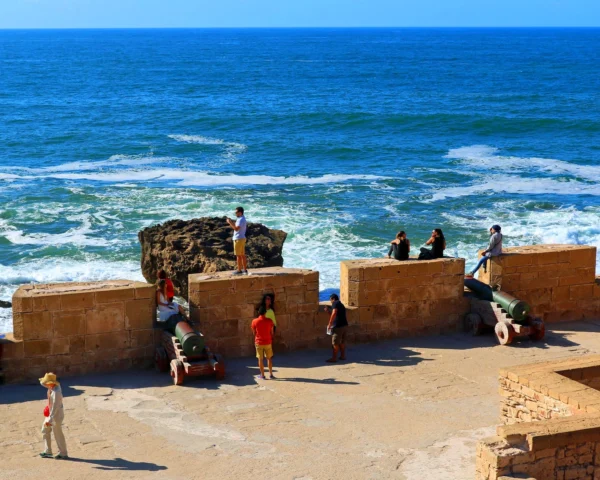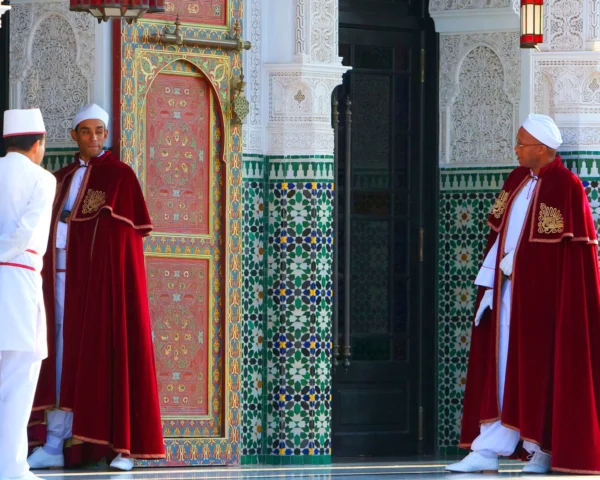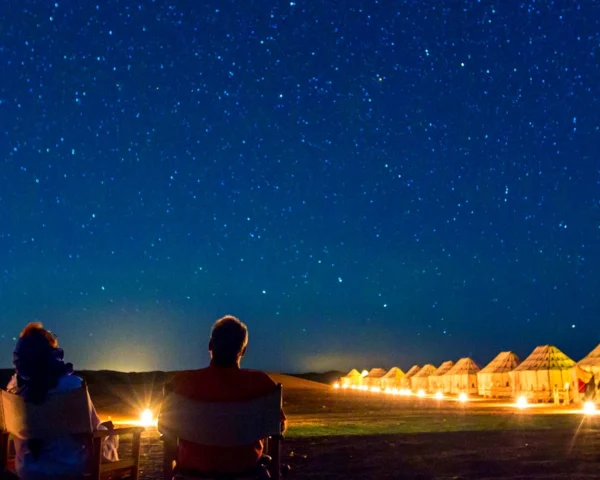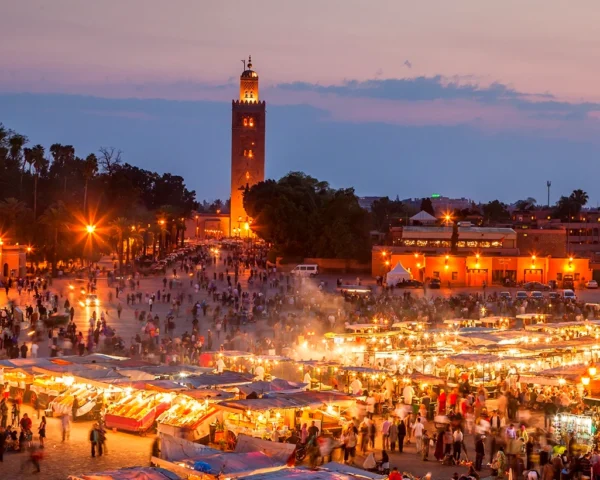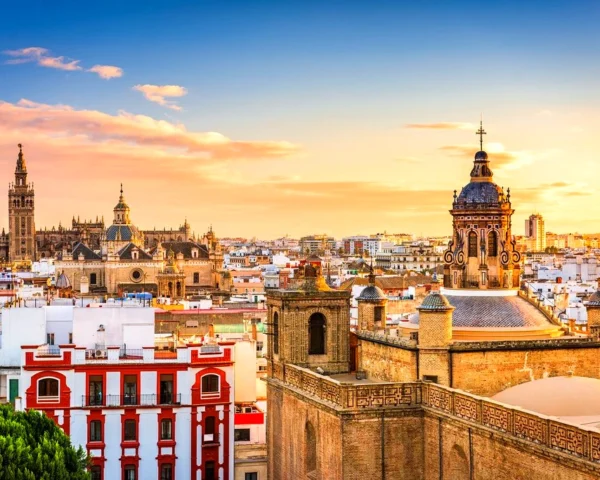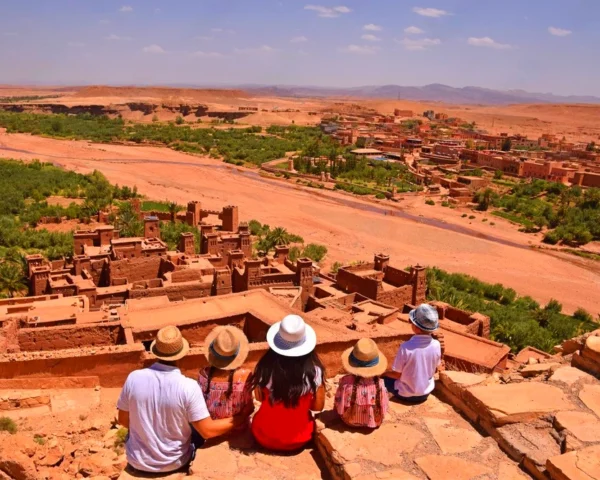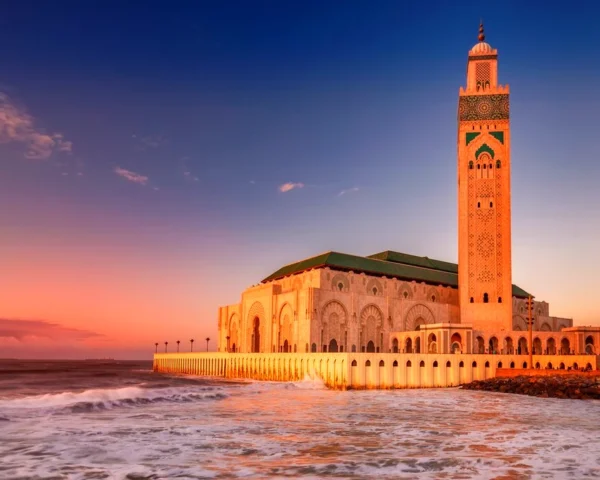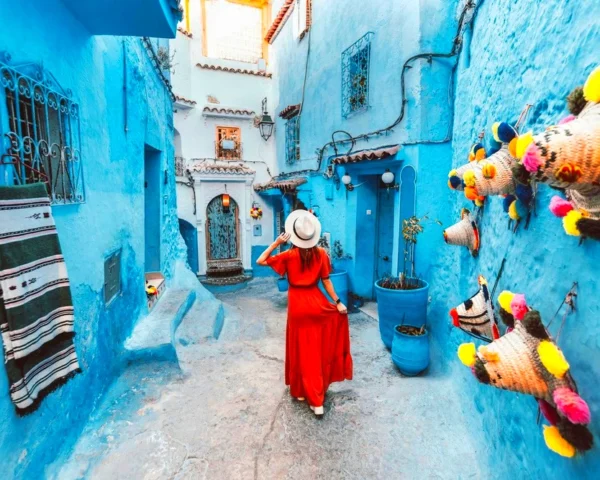Weather in Morocco
The climate in Morocco closely resembles that of California from its northern to southern regions, but it can vary significantly depending on the specific location. Along the Atlantic coast, temperatures tend to be cooler compared to the inland areas, and the northern part of the country is milder than the Sahara Desert. During winter, the Atlas Mountains experience much colder weather than lower elevation areas.
Typically, spring and fall offer the most pleasant weather with average temperatures around 70°F, making these seasons ideal for visiting Morocco. Summers tend to be scorching, with temperatures exceeding 100°F in the south and remaining quite warm in the north. Winter temperatures can drop to around 40°F, which coincides with the rainy season.
It’s worth noting that most traditional Moroccan homes and riads lack central heating, so despite 60F seeming warm for a winter day, it can feel chilly when coupled with rain and no internal heating. However, many hotels and riads have heating and cooling systems.
Weather in Morocco in January
In Morocco, January is typically the coldest and wettest month. Throughout daylight hours, the thermometer can fluctuate between 10°C and 20°C and beyond. Despite the winter setting, the days can impart a sense of warmth when the sun graces the sky.
However, the temperature drops as the sun sets. As the wettest month on the calendar, January witnesses approximately five days of rainfall, delivering up to two inches of precipitation in specific areas.
Comparatively, temperatures in coastal regions bordering the Mediterranean tend to be milder than those along the Atlantic shores. Deserts can experience temperatures of 20°C and above, while mountainous areas may see them dip below 8°C. It’s common for snow to blanket the mountains during January and February.
Morocco Weather in February
In February, Morocco gradually loosens winter’s grip. Temperatures show a slight incline, hovering around 10°C to 22°C or more, contingent on the region. Precipitation diminishes a bit, with 3 to 4 rainy days yielding up to 1.5 inches of rainfall.
The sunny days exude warmth and comfort, yet once dusk settles, a biting cold serves as a stark reminder of the ongoing winter. Coastal and desert regions boast the highest temperatures, whereas mountainous areas may register as low as 8°C, with snow presenting a tangible likelihood.
Morocco Weather in March
In Morocco, the onset of spring is signaled in March as temperatures gradually rise during the day, ranging from 20°C to 24°C depending on the region. However, nights remain cool, with temperatures falling between 11°C and 14°C.
When moving between regions, one will notice significant weather variations. Coastal areas generally boast warm, sunny days with minimal rainfall, but it’s wise to anticipate showers when journeying across the country. Keep in mind that in March, Marrakech and Fez will experience different climates; temperatures display notable diversity throughout Morocco. March marks the country’s second-highest rainfall month, averaging 1.4 inches.
Morocco Weather in April
In March, travelers exploring the Atlas or Rif Mountains may encounter snow, while those venturing into the Sahara desert may experience drastic temperature shifts between day and night. Overnight desert visitors should pack blankets for the unexpectedly cold nights despite the daytime heat.
April marks the onset of spring in Morocco, with temperatures gradually rising. Many regions see highs of 24°C, though coastal areas like Tangiers range between 16°C and 20°C, and southern cities like Dakhla sit at 19°C to 23°C. In Marrakech, the April weather typically peaks at 24°C and drops to around 12°C.
As evening falls, temperatures dip significantly, with some areas hitting lows of 12°C. Even the Sahara desert cools down at night, contrasting with its daytime warmth. While April generally sees little rainfall, sporadic showers are possible. Travelers planning mountain excursions in the Atlas should note that April is the region’s rainiest month, with an average precipitation of up to 35mm.
Morocco Weather in May
May brings a significant rise in temperatures in Morocco, especially in inland cities like Marrakesh, where temperatures can soar to a scorching 29°C. This is in contrast to the cooler coastal regions, where Tangiers experiences a more moderate 22°C and Casablanca hovers around 23°C. Evenings along the coast can dip to a chilly 8C, prompting the need for sweaters and light jackets. Travelers often inquire about the weather in Marrakech and Agadir during May, as these destinations are quite popular this season. Marrakech experiences daytime highs of 28°C and nighttime lows of 15°C, while Agadir offers a slightly milder climate with daytime temperatures around 23°C and nighttime temperatures dropping to 13°C.
Venturing deeper into the desert brings even higher daytime temperatures that might be quite uncomfortable for those sensitive to heat. Conversely, a trip to the Atlas Mountains during May provides a refreshing escape with daytime averages of 22°C and a significant cool-down once the sun sets.
Morocco Weather in June
During June in Morocco, the onset of summer brings warmth and sunshine. Along the coastlines of the Mediterranean and Atlantic, daytime temperatures typically hover between 20°C and 25°C, complemented by a refreshing ocean breeze. However, as one ventures inland, the mercury rises significantly.
Cities like Fes and Marrakech experience average daily temperatures ranging from 25°C to as high as 35°C. Nevertheless, once the sun sets, the temperature drops, creating a more comfortable atmosphere. In the mountains, both days and nights remain notably cooler. Surprisingly, even in June, pockets of the High Atlas region may retain snow.
As June ushers in the dry season in Morocco, precipitation becomes a rarity until September or October. These arid conditions often lead to drought scenarios. Travelers should remain mindful of staying hydrated to avoid any potential risks during their explorations.
Morocco Weather in July
For individuals with a penchant for high temperatures, July presents an ideal opportunity to explore Morocco. This month ranks as one of the hottest in the country, only second to scorching August, boasting average daily temperatures ranging between 29°C and 36°C. As the sun sets, evenings witness a slight drop in temperature to around 18°C to 22°C. Coastal regions bordering the Mediterranean and Atlantic, along with the High Atlas mountains, experience relatively milder daytime weather. Conversely, inland areas grapple with intense heat and aridity, characteristic of Morocco’s rainless summers. When selecting accommodations, it’s advisable to consider the prevailing heat, given that many establishments lack air conditioning facilities.
Morocco Weather in August
In Morocco, August is renowned as the peak of summer, when scorching temperatures can pose a challenge for those sensitive to heat. However, if a trip to this mesmerizing North African country is a must, there are strategies to navigate through this hot month.
Opting for coastal or mountain destinations can offer respite from the intense summer heat. Emulating the locals by seeking shelter indoors during the peak sun hours can also prove beneficial. As the sun sets, temperatures tend to drop, and various regions transform into vibrant hubs, bustling with activity that contrasts with the daytime tranquility.
Morocco Weather in September
Wondering about the weather in Morocco during September? Although summer heat begins to wane as autumn sets in, temperatures remain pleasant. Along the coast, expect average daily highs of 25°C and nighttime temperatures around 17°C. Meanwhile, temperatures drop significantly in the Atlas Mountains, with daytime highs around 18°C and nighttime lows of 10°C or lower. The desert areas, however, still boast warmth, ranging from over 30°C during the day to about 20°C at night.
Rainfall remains minimal in September, so you’re unlikely to encounter showers. Yet, it might be wise to have an umbrella on hand for a respite from the scorching sun.
Morocco Weather in October
Autumn’s arrival is particularly noticeable in Morocco during October. Daytime temperatures often fall to the 20s (Celsius) and even dip into the teens at night across most regions. While cities like Marrakech in the desert can still experience daytime highs of up to 29°C, cooler days are not uncommon. The evenings bring a noticeable chill, prompting the need for a cozy sweater or a light jacket after sunset.
In the mountainous areas, October in Morocco brings a more significant temperature decrease, leading to the transformation of deciduous tree leaves into a vibrant display of colors. Along the coast, the sun’s warmth battles with the cool ocean breeze, creating a unique mix of sensations.
This month also marks the increase in rainfall following the dry summer period. While Morocco is not known for heavy precipitation, it’s wise to be ready for occasional showers if you plan to visit North Africa in October.
Morocco Weather in November
In Morocco during November, autumn reigns supreme, with hints of winter starting to creep in, bringing a noticeable chill to the air on certain days. Temperatures across the country are steadily decreasing.
Although daytime highs can reach up to 27°C occasionally, the average temperatures in most areas range from 18°C to 23°C, with coastal regions experiencing days where the mercury barely climbs above 13°C.
November sees a slight uptick in the possibility of rainfall. Despite the seemingly insignificant increase, showers can be sudden and intense, surprising you with unexpected downpours. There’s no certainty of rain either, so being ready for any weather scenario is key!
When exploring Morocco in late autumn and winter, it’s essential to consider your location. While Marrakech and southern regions offer warmer daytime weather, venturing into mountainous or coastal areas will bring a noticeable drop in temperature.
Morocco Weather in December
Morocco experiences a significant drop in temperature during December, especially in Marrakech, with daytime temperatures averaging around 14°C. The nights are notably cooler, and there is a high probability of encountering rainfall as December marks one of the rainiest months in the country.
Contrary to many regions in the Northern Hemisphere, Morocco’s winter is relatively mild, resembling more of an autumn climate than a typical winter setting.
Travelers venturing into the Atlas Mountains should be prepared for true winter conditions at higher elevations. Morocco stands out as a destination where tourists can transition from camel rides in the desert one day to skiing the next.
Curious about Marrakech’s December weather? Brace yourself for delightful conditions! The city boasts an average temperature of a pleasant 21 degrees Celsius, with daytime highs reaching 25 degrees and nighttime lows of 17. With approximately six hours of daily sunshine, exploring Marrakech’s beauty becomes even more enticing.
For those seeking a winter getaway, Morocco presents itself as an ideal destination. Spend time in the North African sun, which warms your body and soul.
TRAVEL AGENCY OR TOUR OPERATOR?
Looking to collaborate with a dependable and trustworthy travel agency? Moroccoholidays.org is here to assist you in exploring the wonders of this destination.
CONNECT WITH AN EXPERT

